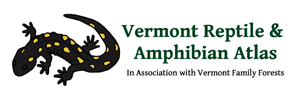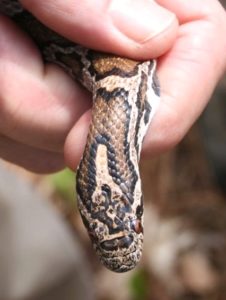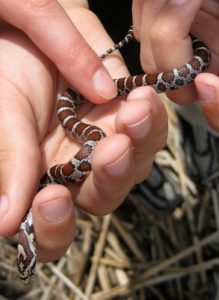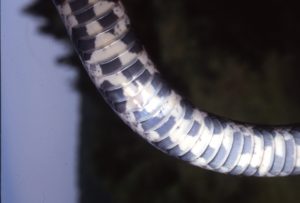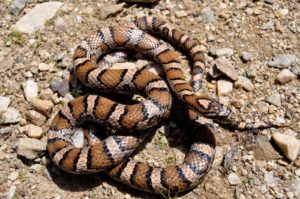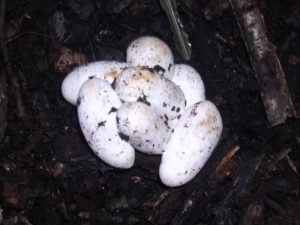Lampropeltis triangulum
AKA: Spotted Adder, Puff Adder, Checkered Adder
Identification
The Eastern Milksnake has reddish-brown blotches outlined in black. They become darker with age. They also have a white “Y” (which may be complete or broken) on the back of their head. The milksnake’s underside has a white and black checkerboard pattern. Milksnakes can grow to 2-3 feet long (the longest documented in Vermont is 43 inches) and have smooth scales. When they feel threatened, milksnakes will vibrate their tails. As a result they are frequently misidentified as rattlesnakes.
Get more detailed identification and life history information by downloading the chart here.
You can learn more about this species and see some video footage by checking out this clip from our Rattlers, Peepers & Snappers DVD.
Range/Habitat
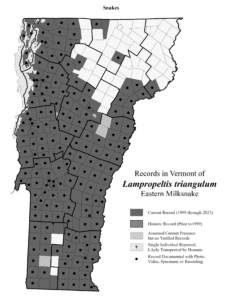
[ click image to zoom | download printable PDF ]

[ click image to zoom | download printable PDF ]
Eastern Milksnakes inhabit old fields, old buildings, stone walls, and ledges. They are widespread at lower elevations in Vermont.
Status
This species has a state natural heritage rank of S5 (common). Please report sightings of this species in Vermont if you have not reported them within the last five years from a given location. Any natural history observations (feeding, migrations, road crossing areas, early or late season appearance, abnormalities, etc.) are appreciated. Photographs are always helpful, particularly if your report is the first report of this species from a town.
Note
The Eastern Milksnake is also known locally as the Spotted or Checkered Adder and is rumored to be venomous, but it is not actually an adder. Adders are a group of old-world vipers and are venomous, but milksnakes are not related to them and are non-venomous.
Unlike most other Vermont snakes, milksnakes lay eggs. Along with the Central Ratsnake, the Eastern Milksnake is one of Vermont’s two constricting snakes.
Additional Photos
More Info
- Lampropeltis triangulum at the Animal Diversity website
- Lampropeltis triangulum at the Canadian Herpetological Society website
- Lampropeltis triangulum at the Snakes of Massachusetts website
Species summary written by Ariel K. Mck. Burgess.
